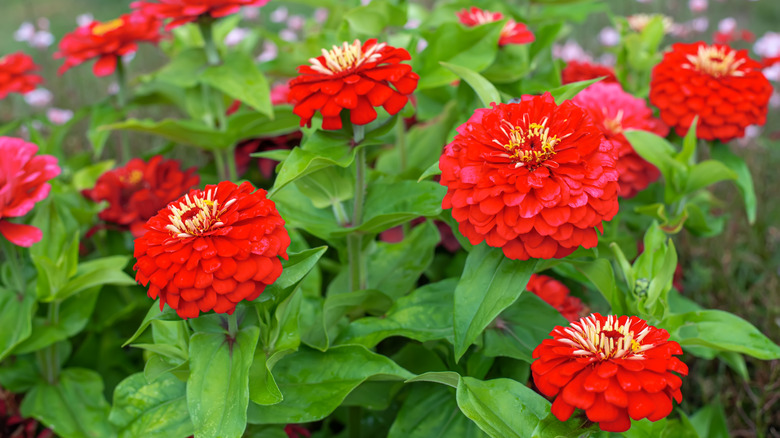Every gardener is most likely destined to grow zinnias at some point. These irresistible flowers are resilient and drought-tolerant and are like a magnet to pollinators. If you lack pollinators in your garden, grow zinnias. These self-seeding annuals will likely come back each year if you allow their seeds to stay on the ground, but why cross your fingers for more when you can guarantee a whole field next year? You can have the same beautiful zinnias by saving seeds of open-pollinated heirloom varieties.
Seed-saving may seem like an advanced aspect of gardening, but it’s deceivingly simple. You could do it even if it were your first year growing zinnias. The only part that may be a little intimidating is knowing whether you have heirlooms or hybrids and whether they cross-pollinated or not. Once you can make sense of the topic, which won’t take much, you can easily save zinnia seeds for years to come.
Heirloom vs. hybrid: what can be saved?

There isn’t a set-in-stone definition of heirloom plants, but most gardeners will probably tell you it’s an open-pollinated plant that has been around for years. Hybrid plants result from two plants, usually heirlooms, that cross-pollinated and created a plant that is a mix of the parents. Zinnias are available in heirloom and hybrid varieties, and the kind you choose will affect how seed-saving turns out.
You can save seeds from either kind of zinnia, but the outcome will differ depending on a few factors. Zinnias are outcrossed plants, requiring cross-pollination to develop seeds and produce the next generation of flowers. Insects take care of the pollinating for you, which means you might not get what you expected. Heirloom varieties must be cross-pollinated with the same species or flower cultivar for the next generation to be the same. If two heirloom varieties cross-pollinate and you save those seeds, you’ll receive a hybrid with features of each heirloom. Saving seeds from two crossbred hybrids will be a bit of a grab-bag of traits since so many flowers were involved in the mix.
Plant the same heirloom varieties to ensure you get the same flowers next year. Since insects and the wind will pollinate zinnias, make sure there aren’t other types nearby, including in your neighbors’ yards. Distance is the best way to prevent cross-pollination, but you can use shrubs, buildings, fences, and shade cloths in small yards to keep the pollen contained.
Saving zinnia seeds couldn’t be easier

Seeds are ready to save when the seed head is dry or at least mostly dry. There are a few different ways you can do it, so find the one that works well for you. The most straightforward method is to let the seed head dry on the stem. The stalk, leaves, and seed head will turn to a crispy brown or tan, and that’s when the seeds are ready for harvesting. Remove the seed head and pull it apart to reveal the seeds. There will be seeds and petals; you only need to keep the seeds, so throw away everything else. Store the seeds in a cool, dry area over winter, and then you can plant them in the spring. If you don’t want to risk the seeds dropping when you’re not looking, place an organza or paper bag over the flower once it starts to wilt. The flower will dry out, and the seeds will fall into the bag. The best part is that birds can’t eat your seeds!
If you’re growing several varieties or need some help remembering what’s what, you can harvest the seed head before the petals dry out. Keep the petals attached to the seed head and allow them to dry out indoors on a towel in a dry, sunny location. Once everything is completely dry, you can store them over winter, and then replant in the spring.



